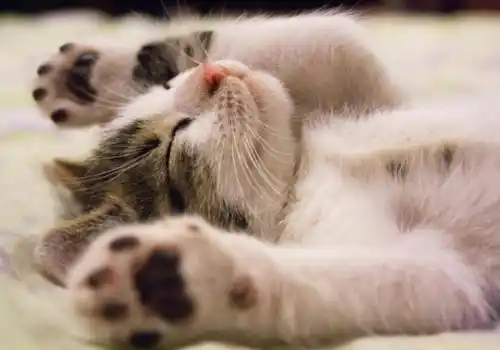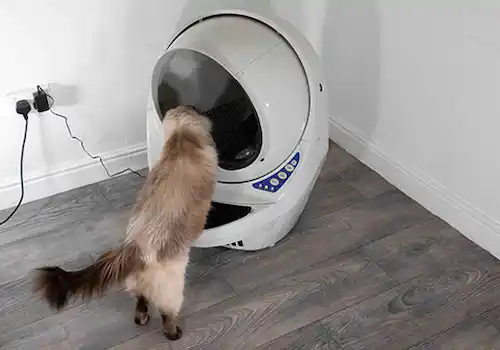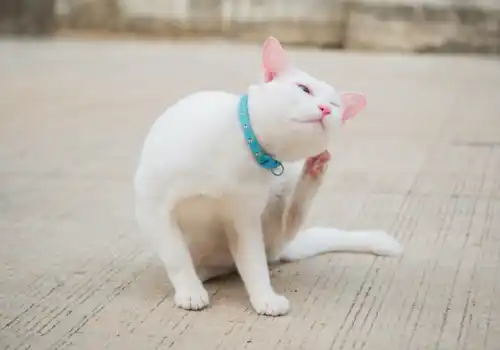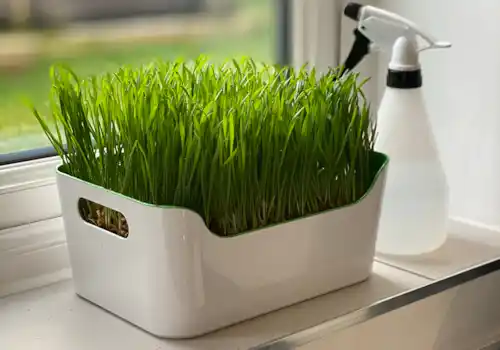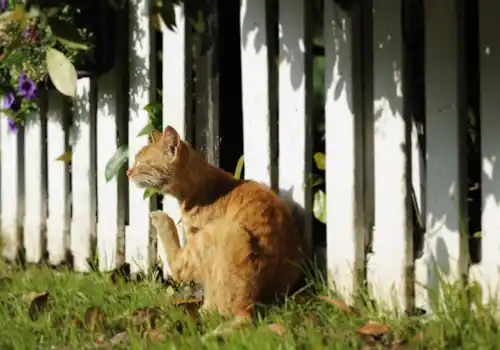Vet Penny Clarke explains what is megacolon in cats
Megacolon means a massively enlarged, abnormal section of a cat’s digestive tract. This serious condition usually affects older cats and is complicated to manage and treat.
What is the colon?
The colon is the end section of gut connecting the small intestines to the anus. Most nutrients are absorbed into the body from food as it travels through the small intestines. The digesta (mushed up food) is left containing very little nutrition as it enters the colon. The colon’s job is to reabsorb water and electrolytes (tiny electrically-charged particles).
The walls of the colon consist of layers of muscle (imagine the rubber of a hosepipe). Signals from the spinal cord stimulate these muscles to contract, forcing faeces to move along its length. The end product of the colon’s work is a perfectly formed poo!
What causes megacolon in cats?
Cats who have repeated bouts of constipation are most at risk of developing megacolon. Faeces ‘clog ups’ the colon and rectum leading to obstipation (a severe form of constipation). Over time, the colon wall stretches to accommodate the larger volume of hard faeces. As the colon dilates, its ability to contract reduces and the once tube-like structure starts to resemble a saggy sack.
Cats can become constipated for a number of reasons:
Pain
Any form of pain can affect how a cat goes to the toilet. There are obvious forms of pain involving the bottom (such as cat bite abscesses and impacted anal glands) and hidden causes (such as osteoarthritis). Hip and spinal osteoarthritis can make it difficult for cats to hold themselves in position long enough to fully empty their bowels.
Even when their pain is managed, some cats remember how painful it once was to pass faeces and will avoid going to the toilet — this can lead to constipation.
Behavioural issues
Cats can hold onto their faeces if they find their litter tray unacceptable. Some cats refuse to use the facilities if the tray is dirty (even if it’s their own waste) or they dislike the feel of a particular substrate on their paws. The position of their trays within the house can also cause upset (a noisy hallway may be too stressful for example).
A previous negative litter-tray experience may cause constipation — cats will avoid using the tray in anticipation of a repeat scare (nosey dogs and noisy children could be the culprits!)
A narrow pelvis
The pelvic canal is the bony tunnel in the pelvis through which the colon passes. Any deformity narrowing this tunnel can compress the colon causing faeces to build up.
Sometimes congenital abnormalities result in a deformed pelvis, although more commonly it’s due to previous injury (such as a healed pelvic fracture after a road traffic accident).
Neurological (nerve) problems
If nerve signals don’t stimulate the colonic wall, faeces will stay put, leading to constipation. Road traffic accidents can have disastrous consequences for a cat’s pelvic nerves. Tail pull injuries can also cause serious damage (the tail is trapped with such force it damages the lower spinal cord).
Rare neurological conditions (such as Key Gaskell syndrome) can also affect how well nerve signals reach the colon.
Long-term gastrointestinal (gut) disease
Cancers of the gut often obstruct the colon by narrowing or compressing the colonic wall. (Imagine standing on a hosepipe — water pressure would suffer!) Inflammatory conditions of the bowel (IBD) usually cause diarrhoea although can cause constipation too.
Dehydration
One of the main functions of the colon is to absorb water from faeces. If a cat is dehydrated, the colon attempts to absorb as much water as possible from the faeces causing them to harden and dry out.
Metabolic disease
Disease affecting a cat’s metabolism (how they use and store energy) can lead to electrolyte imbalances (such as low potassium or calcium levels). Electrolytes help with muscle function — low levels make it tricky for the colon to contract properly leading to a build-up of faeces.
Obstructions
Sometimes foreign bodies (cats eat the strangest of things) or hairballs can cause a physical blockage within the colon leading to constipation. (I once saw this in a cat who munched on supermarket carrier bags!)
Idiopathic megacolon
Sometimes cats get megacolon despite no obvious underlying cause. Here, the problem lies within the muscle fibres of the colon wall — the muscles weaken and are unable to contract leading to impacted faeces.
What are the signs of megacolon in cats?
Cats with megacolon have signs of obstipation (severe constipation). They may spend longer in their litter tray and look uncomfortable while straining to go. Any faeces they do pass are often harder and smaller than normal.
Sometimes constipated cats appear to have diarrhoea as they pass foul-smelling liquid instead of hard stools. This is actually liquid passing around the impacted faeces and is caused by irritation to the lining of the colon.
Many cats lose their appetite, become withdrawn and sometimes vomit.
Diagnosing megacolon in cats
Your vet will fully examine your cat and palpate (press on) their abdomen. It’s usually possible to feel impacted faeces within the colon.
It’s likely your cat will need tests to look for the underlying cause of their constipation. This may include blood tests, imaging (ultrasound scans, X-rays, or a CT scan) and endoscopy (a small camera is used to have a look around inside the gut).
Treatments for megacolon in cats
Early treatment of constipation is essential to help preserve the function of the colon (although sadly megacolon can still develop despite our best efforts). If your cat has an underlying health condition, they’ll need treatment for this as well as tackling their constipation.
Emergency treatment of constipation includes giving intravenous fluids (a drip into your cat’s vein) to rehydrate them and supply the gut with the fluids it needs. Constipation is painful — cats need pain medication to keep them comfortable.
Severely constipated cats sometimes need an enema to remove impactions from their gut (they’re asleep for this under heavy sedation or a general anaesthetic). A special solution is gently flushed up the cat’s bottom and faeces are slowly broken down and removed (the vet with the smallest fingers usually gets this job!)
Constipated cats require ongoing management to prevent further blockages:
- Make sure fresh water is available at all times — water fountains encourage cats to drink more. Wet food has a higher water content than dry so it might be worth adding this to your cat’s diet (or cutting out dry food completely).
- If normal wet food doesn’t help, your vet may recommend a specific diet. It’s important to speak to your vet about this as diets for constipated cats have much more fibre in than those suitable for cats with megacolon.
- Make your cat’s litter tray as appealing as possible. Make sure you have enough trays for the cats you have and that they’re cleaned out regularly.
- There are various laxatives available that encourage normal faecal movement. Some laxatives draw water into the colon to make faeces softer whereas others act on the colon wall to stimulate muscle contractions.
- Prokinetic (pro-movement) medications can help to keep faeces on the move through the colon. They work best in combination with other measures (such a diet changes).
If your cat develops severe megacolon that isn’t responding to medical management, they may require surgery. This is the last resort as it’s a major operation that involves removing the damaged colon. Along with the usual risks of surgery, there’s a chance your cat could have diarrhoea for a while afterwards (it usually clears eventually). Once through this post-op stage, most cats do very well after surgery and continue to live comfortably.
Please speak to your vet if you notice anything strange about your cat’s toileting habits. The sooner we investigate and treat conditions like constipation, the better the long-term outlook is for our patients.

